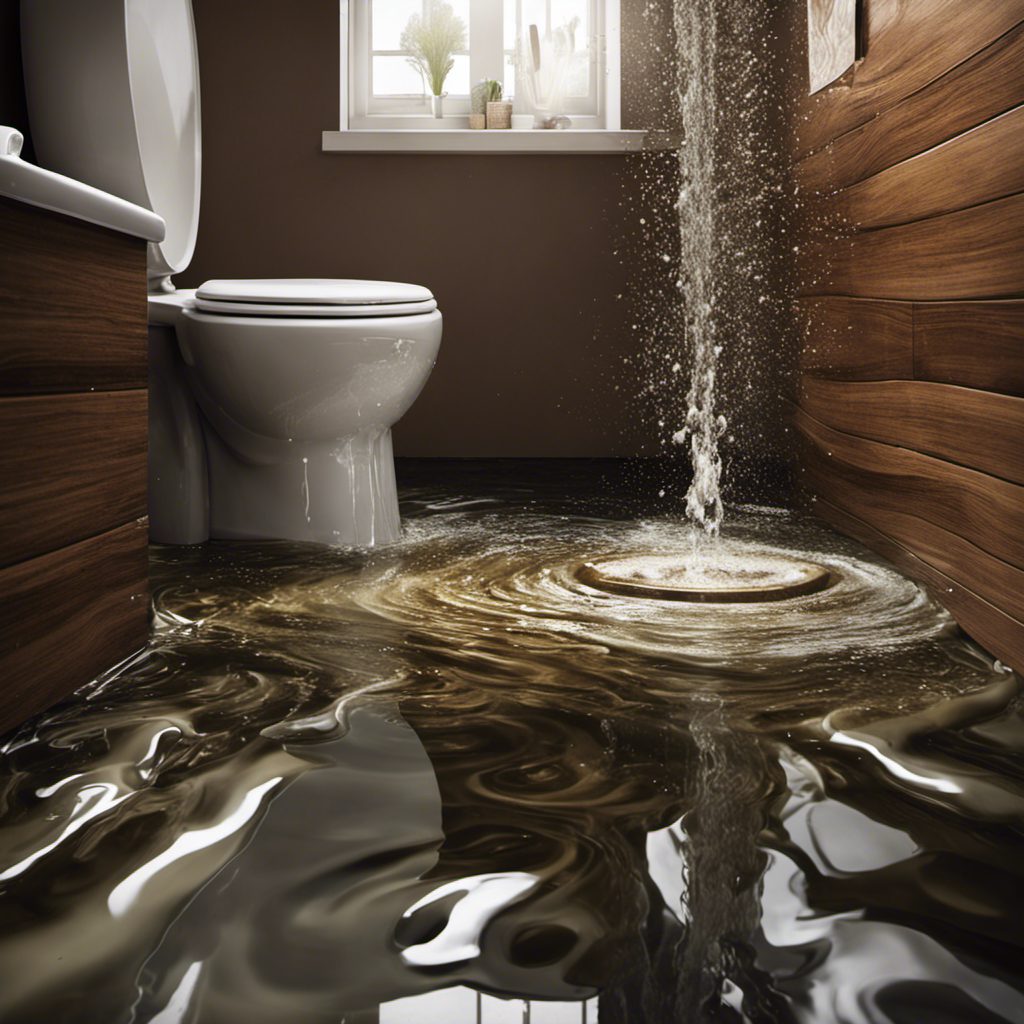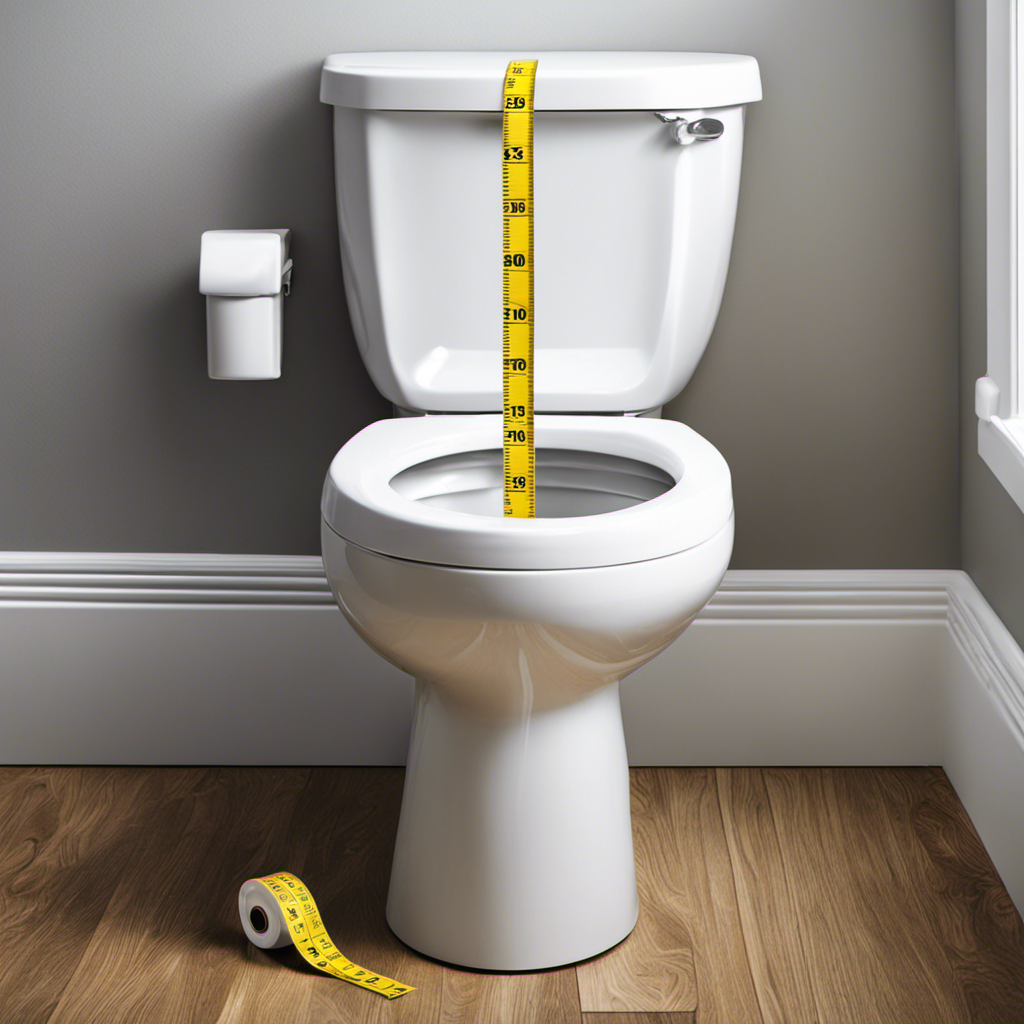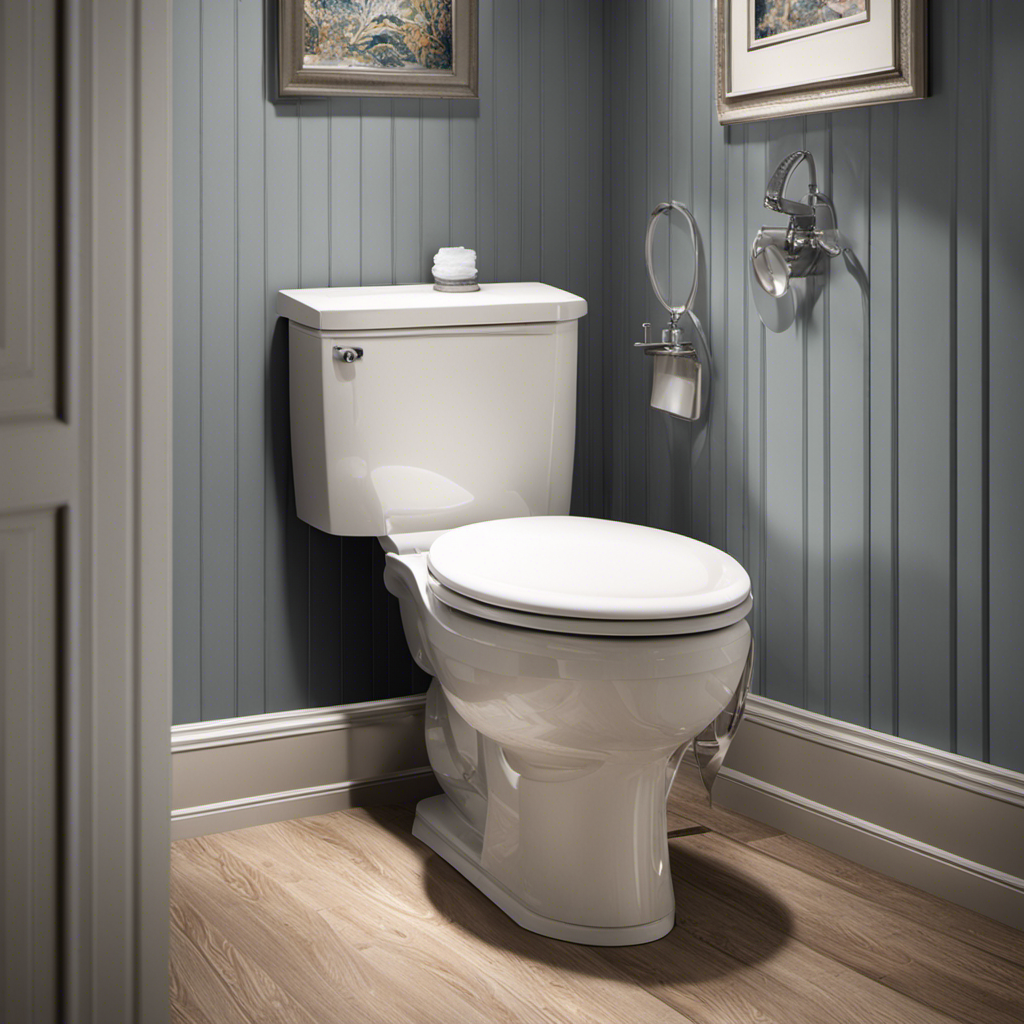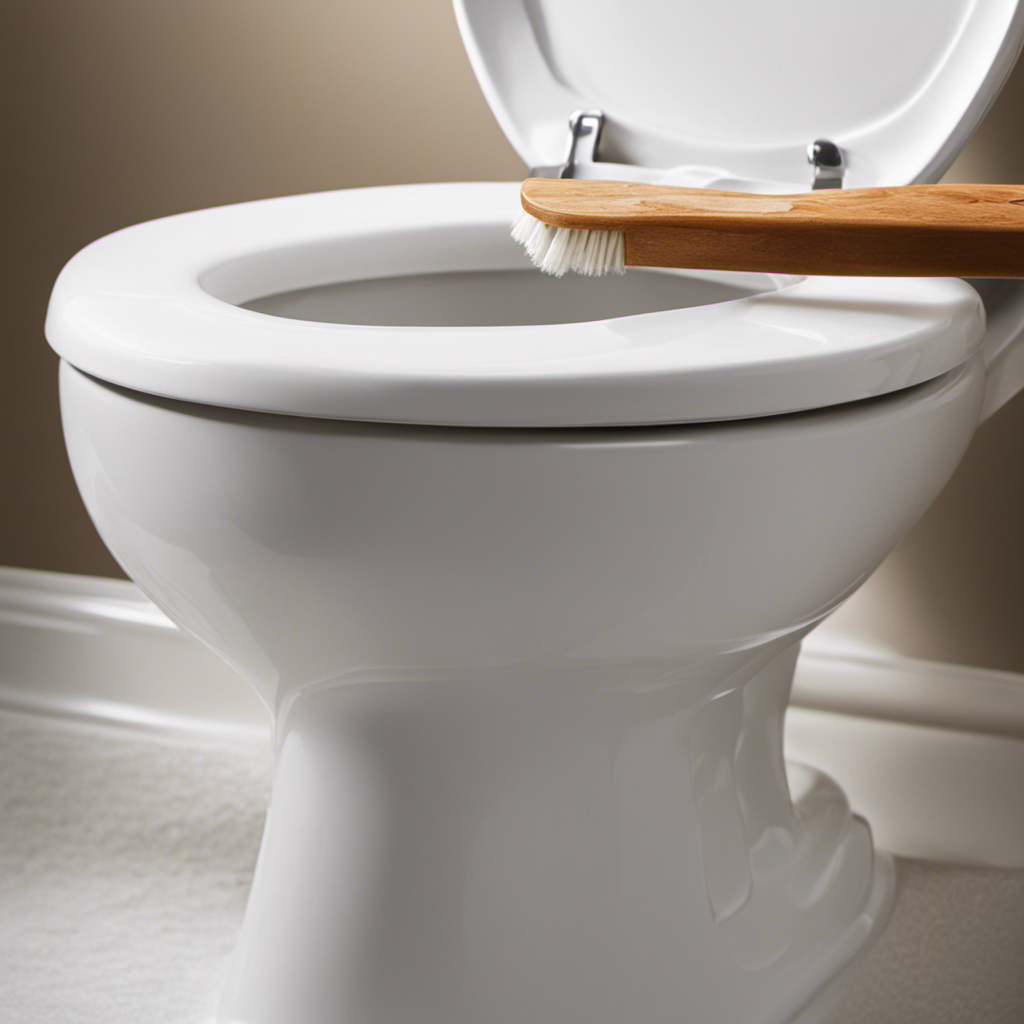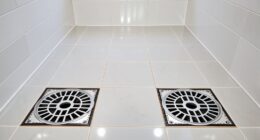I’ve had my fair share of bathroom mishaps, but one problem that always seems to catch me off guard is when my toilet decides to back up when I flush it. Talk about a messy situation!
But fear not, because in this article, I’m going to share with you the common causes of toilet backups, the signs to look out for, and most importantly, how to prevent and clear them.
So grab your plunger and let’s dive into the world of toilet backups!
Key Takeaways
- Toilet clogs can occur due to an obstruction in the drainpipe, a blocked sewer line, malfunctioning toilet trap, or tree roots growing into the sewer line.
- Flushing non-flushable items such as wipes, sanitary products, or paper towels can lead to toilet clogs.
- Signs of a backed-up toilet include water rising in the bowl, slow or weak flush, overflowing or leaking water, strange gurgling sounds, and foul odors.
- To prevent toilet backups, regularly maintain the plumbing system, avoid flushing non-flushable items, use easily dissolvable toilet paper, install a drain strainer, and educate household members about proper toilet usage.
Common Causes of Toilet Backing up When Flushed
If your toilet keeps backing up when you flush, there are a few common causes that you should be aware of.
One of the main culprits is toilet clogs. These occur when there is an obstruction in the drainpipe, preventing water and waste from flowing out properly.
Another possible cause is plumbing problems. Issues such as a blocked sewer line or a malfunctioning toilet trap can lead to backups. It’s important to address these issues promptly to avoid further damage and inconvenience.
In the next section, we will discuss the signs and symptoms of a backed-up toilet, so you can identify the problem and take appropriate action.
Signs and Symptoms of a Backed-Up Toilet
When a toilet gets clogged, you may notice signs such as water rising and strange gurgling sounds. These signs and symptoms can be alarming, but it’s important to stay calm and take action to unclog the toilet.
Here are some common signs and symptoms of a backed-up toilet:
- Water rising in the bowl
- Slow or weak flush
- Overflowing or leaking water
- Strange gurgling sounds
- Foul odors
Experiencing these signs can be frustrating and inconvenient. However, there are several DIY methods you can try to unclog your toilet before calling a professional. From using a plunger to using a toilet auger, these methods can help you clear the clog and restore your toilet to normal functioning.
Now that you know the signs and symptoms of a backed-up toilet and some DIY methods to unclog it, let’s move on to the next section: how to prevent toilet backups.
How to Prevent Toilet Backups
One effective way to prevent toilet backups is by regularly maintaining the plumbing system. Proper toilet maintenance is crucial in avoiding costly repairs and inconvenient backups. Here are some important DIY toilet repairs and maintenance tasks that can help keep your toilet running smoothly:
| Maintenance Task | Frequency |
|---|---|
| Check for leaks | Monthly |
| Clean the bowl | Weekly |
| Inspect the flush valve | Annually |
| Unclog drains | As needed |
| Replace old parts | As needed |
Steps to Clear a Backed-Up Toilet
To clear a backed-up toilet, start by grabbing a plunger and positioning it over the drain. Apply firm downward pressure and then pull up quickly, repeating this motion several times until the water starts to drain.
If the plunger doesn’t work, try using a toilet auger to break up the clog. Insert the auger into the drain hole and rotate the handle clockwise, applying gentle pressure.
Alternatively, you can try using a mixture of baking soda and vinegar to dissolve the blockage. Pour half a cup of baking soda into the toilet bowl, followed by a cup of vinegar. Let it fizz for a few minutes, then flush the toilet.
Lastly, if all else fails, contact a professional plumber for assistance. Remember, regular maintenance and following toilet backup prevention tips can help avoid future issues.
When to Call a Professional for Toilet Backup Issues
If the plunger and auger don’t work, it’s best to contact a professional plumber for assistance with toilet backup issues. While it’s tempting to try and fix the problem yourself, there are certain situations where calling a professional is the wiser choice.
If you have tried multiple methods to clear the clog and the toilet is still backing up, it could indicate a more serious issue in your plumbing system. A professional plumber has the experience and tools to diagnose and fix the problem correctly, ensuring that it doesn’t happen again.
Common mistakes to avoid when dealing with a backed-up toilet include using chemical drain cleaners, which can damage your pipes, and attempting to disassemble the toilet without proper knowledge, which can cause further damage.
When in doubt, it’s better to leave toilet backup issues to the professionals.
Frequently Asked Questions
Can a Clogged Toilet Cause Water Damage in Other Parts of the House?
Yes, a clogged toilet can cause water damage in other parts of the house. It’s crucial to prevent toilet overflow and be aware of signs like water stains or dampness in walls and ceilings.
Why Does My Toilet Sometimes Overflow Even When It’s Not Clogged?
Sometimes my toilet overflows even when it’s not clogged. To prevent this, ensure the water level is below the overflow tube and check the fill valve. Common causes of toilet backups include sewer line blockage and faulty flapper valves.
Is It Safe to Use Chemical Drain Cleaners to Clear a Backed-Up Toilet?
Using chemical drain cleaners to clear a backed-up toilet may seem convenient, but it’s not safe. There are alternative methods, like using a plunger or a toilet auger, that are effective and don’t pose potential dangers.
Can Flushing Too Much Toilet Paper Cause a Toilet Backup?
Flushing an excessive amount of toilet paper can cause a toilet backup. To prevent this, consider using toilet paper alternatives like wet wipes or bidets. Proper disposal of feminine hygiene products and avoiding flushing other non-flushable items can also help prevent toilet backups.
What Should I Do if My Toilet Keeps Backing up Despite Following Preventive Measures?
If my toilet keeps backing up despite following preventive measures, I would first try DIY toilet unclogging methods. If those fail, I would consider calling toilet repair services for professional assistance.
Conclusion
In conclusion, dealing with a backed-up toilet can be a frustrating and messy situation. However, by understanding the common causes and signs of a backup, you can take preventive measures to avoid future issues.
Remember to be proactive in maintaining your toilet to prevent backups, and if you do encounter a backup, follow the steps provided to clear it yourself.
But, if all else fails, don’t hesitate to call a professional for help. Trust me, they’ll save the day and have your toilet flowing smoothly again in no time!
